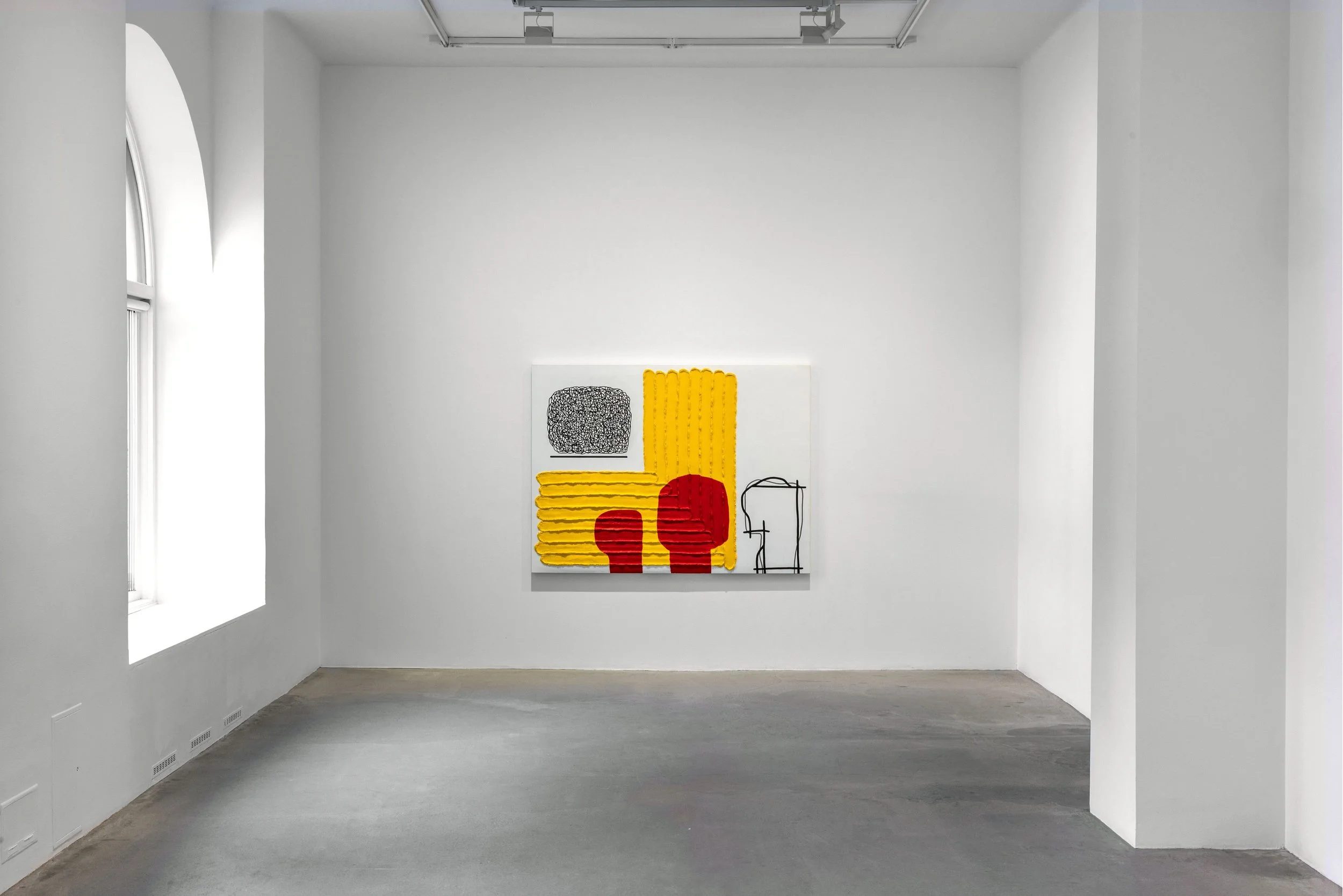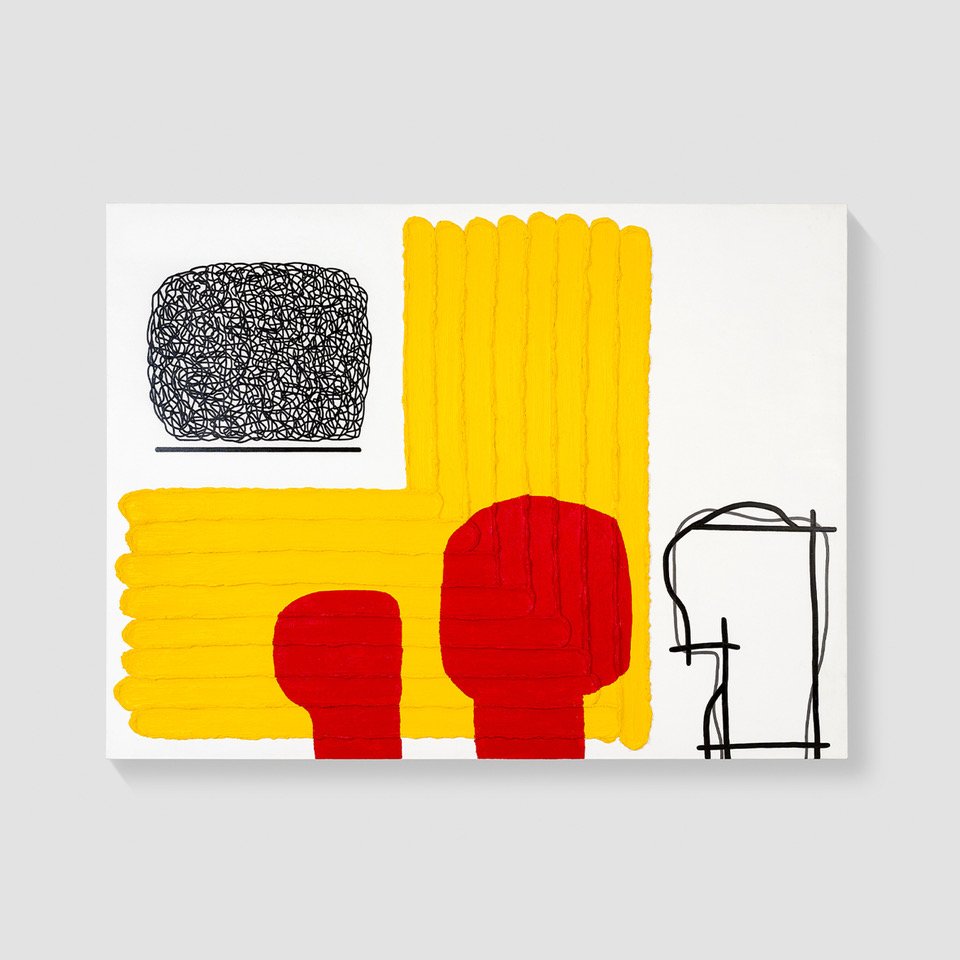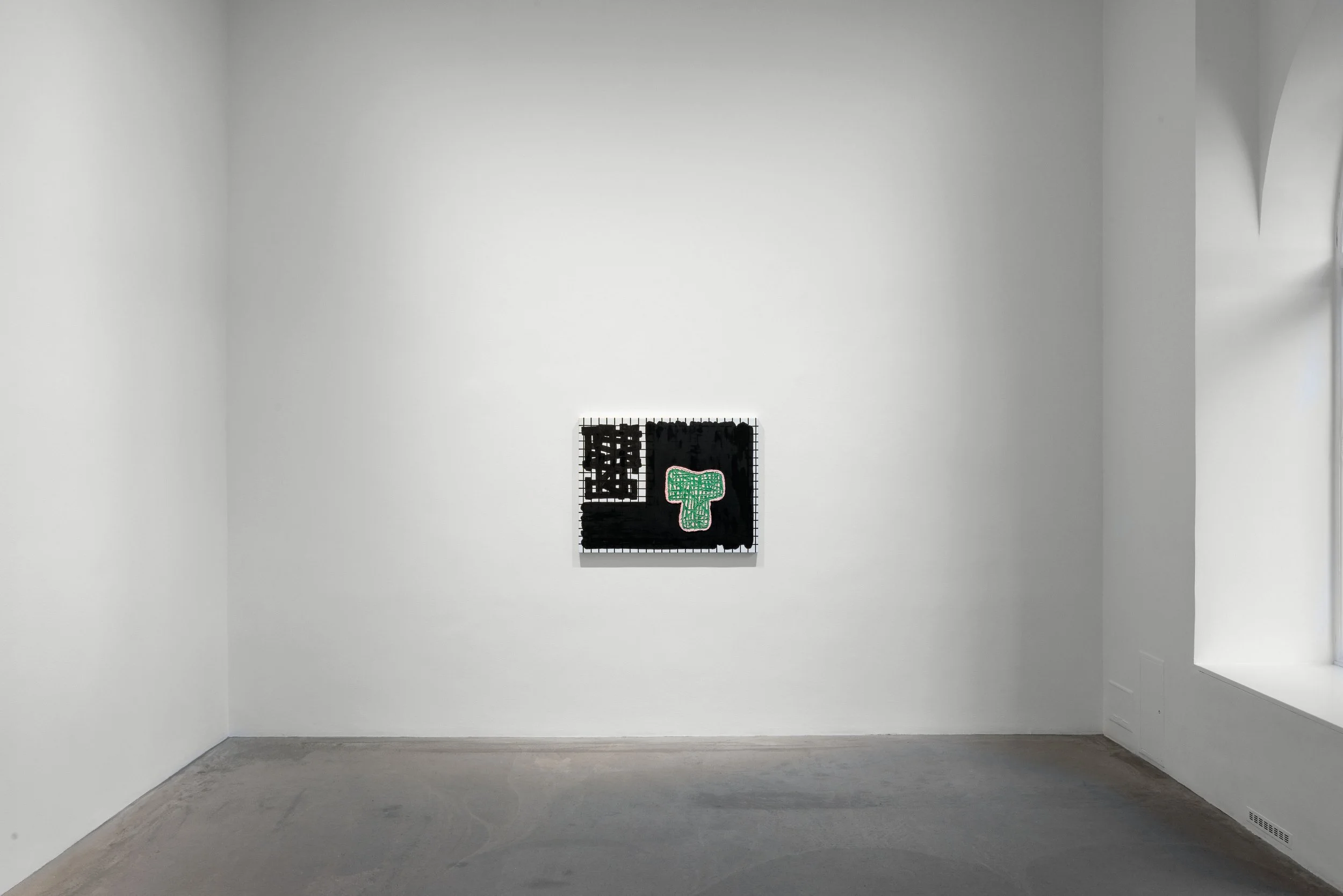JONATHAN LASKER
21 AUGUST – 21 SEPTEMBER 2025
Heavyhanded, blunt, puzzling – these were the words that spontaneously came to mind when I first encountered Jonathan Lasker’s paintings. His works are oddly spellbinding– they have a primal sort of wit. At first glance, the viewer sees little more than a contextless mass of diverse pictorial techniques. Like pieces out of a building block set, black lines, flat and sign-like, are set schematically next to opaque-pastose bulges of color, straight from tube to canvas. Ponderous, painstakingly painted strokes and squiggles spread across a monochromatic background, covered by fat, immovable splotches of color. Not a trace of fleetingness, every shape in the picture sits in its proper spot and yet, none seem to fit quite right.
The viewer gets the feeling of knowing the elements in the picture without being able to truly identify them. This ambivalence is a systematic one: the components in Lasker’s compositions are recurrent of various styles of Modernism. In these paintings, with the artist as a postmodern director, they come together as gaily disguised actors in a colorful, almost dramatic comedy. Stylistic antagonists from abstract painting now seem to be communicating in a controlled, gestural ensemble. Worth noting are the positions of the ‘New York School’ with its Abstract Expressionism, Minimal Art as well as Pop Art – themselves already reactions to the elitist expectations of Classic Modernism. Here and there, elements of Op Art are included. References to artists like Ad Reinhardt, Piet Mondrian, Jackson Pollock or Franz Kline are repeatedly found in Lasker’s paintings. In order to elaborate on Lasker’s specific approach and visual language as a postmodern position, we need to examine the socio-political context of Modernism and the aesthetic values and ideals that it has brought to visual art, in order to reconstruct the problems and challenges of the so-called post-modern generation. Lasker’s style of working will be specifically examined in the context of the work “Hidden Identity.”
Text by Agara Schymocha
Introduction from the Essay "Postmodern Painting in the Mirror of Modernism. How Jonathan Lasker reflects the legacy of Modern Abstraction"
JONATHAN LASKER b.1948 in Jersey City, New Jersey, lives and works in New York City and Munich. Jonathan Lasker has attended the School of Visual Arts in New York City as well as the California Institute of the Arts in Valencia, California.
Jonathan Lasker has exhibited with such galleries as Sperone Westwater (N.Y.) and Cheim and Read (N.Y.), Michael Werner (Cologne), Lars Bohman (Stockholm), Thomas Schulte (Berlin), L.A. Louver (L.A.), Thaddeaus Ropac (Paris), and Timothy Taylor (London), among others.
Jonathan Lasker has had retrospectives at Kunsthalle Bielefield, Stedelijk Museum (Amsterdam), Kunstmuseum (St. Gallen), The Power Plant (Toronto), and the Birmingham Museum of Art (Alabama), the Reina Sofia (Madrid), and Kunstsammlung Nordrhein-Westfalen (Düsseldorf), among others.
Among public collections, his work is in the Mudam, Luxembourg, the Hirshhorn (Washington, D.C.), L.A. County Museum, Moderna Museet (Stockholm), Museum Ludwig (Cologne), and the Whitney Museum of American Art (N.Y.).
This fall, Jonathan Lasker will be the subject of a solo exhibition at the Frye Museum (Seattle). 25 October, 2025 – 27 September, 2026 Read more
Numinous Importance, 2025, Oil on linen, 150 x 200 cm
Photo Max Geuter & Timothy Taylor, London
Installation images Mathias Johansson
CORNER SPACE









